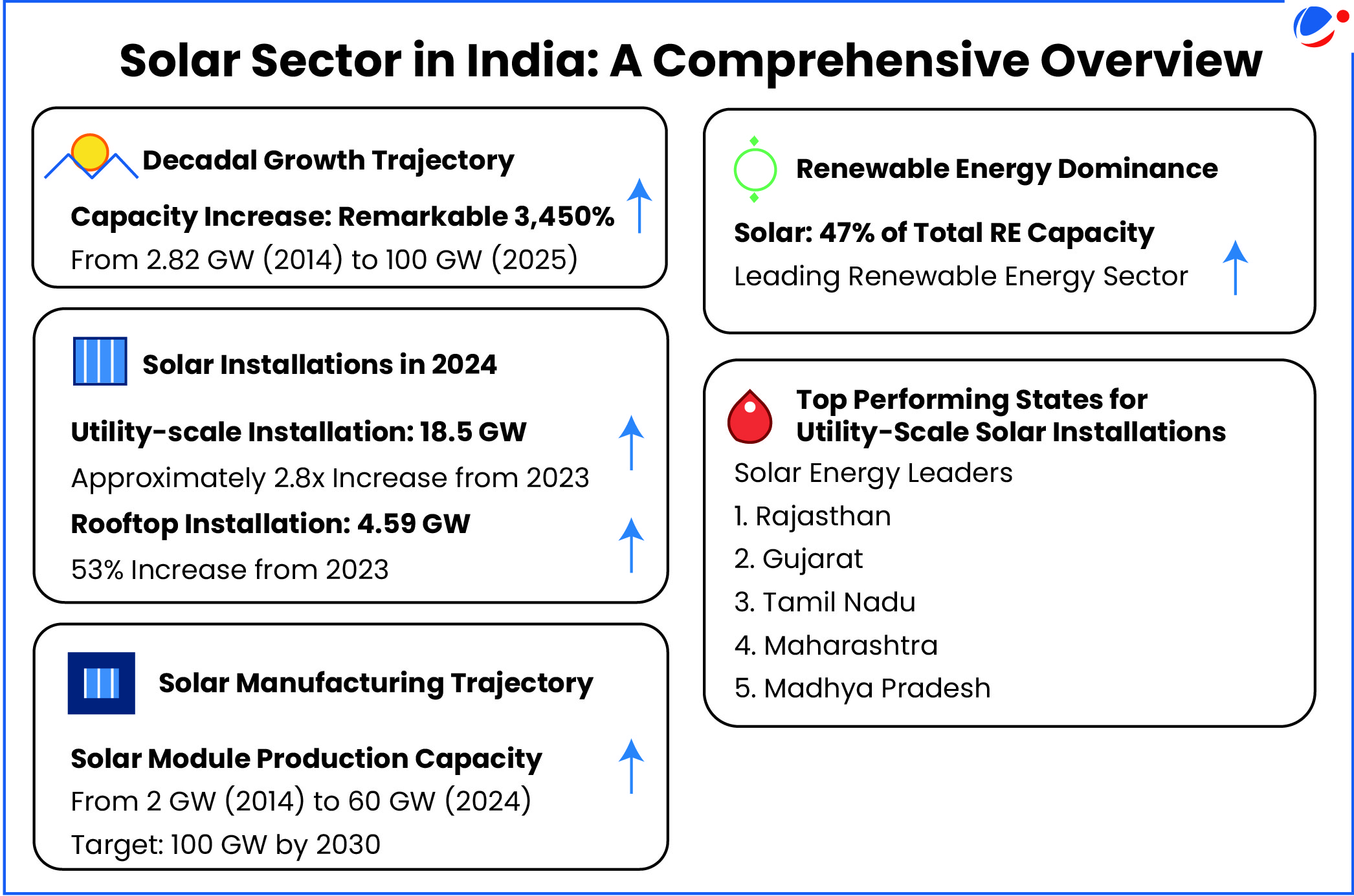This achievement (refer to the infographics) is a significant step toward realizing its ambitious target of 500 GW of non-fossil fuel-based energy capacity by 2030.
Significance of Solar Energy for India

- Future Energy Needs: India’s energy use is 3times the global average and will drive 25% of global demand growth in 20 years. Solar boosts self-sufficiency while reducing environmental impact.
- Emission Targets: Under the updated Nationally Determined Contributions, India aims to cut emissions intensity by 45% and achieve 50% non-fossil fuel capacity by 2030.
- Water Security: Unlike coal, solar doesn’t rely on water, helping tackle water scarcity.
- Rural Electrification: Supports off-grid power generation with fast capacity expansion, benefiting remote areas.
Initiatives to Promote Solar Energy
- PM Surya Ghar: Muft Bijli Yojana: Aims to provide solar power to 1 crore households by March 2027.
- Solar Parks Scheme: Offers ready infrastructure for developers with statutory clearances.
- 100% FDI: Allows full foreign investment under the automatic route.
- Green Term Ahead Market (GTAM): Enables solar energy trading through exchanges.
More action is needed to tackle issues like high installation costs, land acquisition challenges, grid instability, heat waves, and reliance on imported solar panels.



